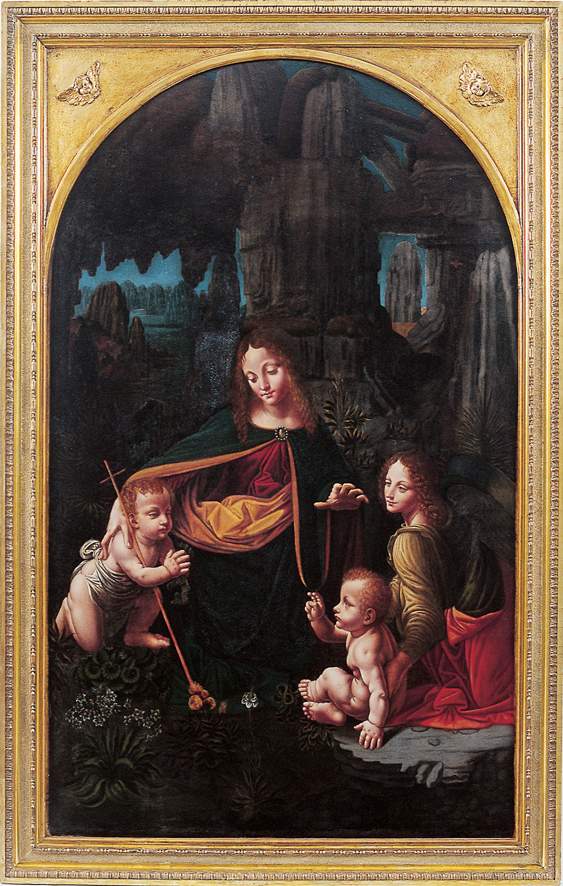From April 19 to August 18, 2019, the city of Biella is hosting an important exhibition on the Renaissance in the territory: it is titled The Renaissance in Biella. Sebastiano Ferrero and his sons. 1519 - 2019, is curated by Mauro Natale and is spread over the three venues of Palazzo Ferrero, Palazzo La Marmora and the Museo del Territorio Biellese, the first two in Biella Piazzo, the oldest part of the city, and the second in Biella Piano. The exhibition aims to illustrate the cultural and figurative richness of the city of Biella and its territory in a journey from the 15th to the 16th century. The focus of the review are the works of which Sebastiano Ferrero (Biella, 1438 - Gaglianico, 1519), his brothers, his sons and his nephews were commissioners: these works have been brought together for the first time after several centuries and can be seen in the cloister of San Sebastiano (at the Museo del Territorio Biellese). Dispersed with the passage of time, the works are now located in various public and private collections, both Italian and foreign. Ferrero was a wealthy and powerful Biellese diplomat, first in the service of the Savoy family and then in Milan from the French after they conquered the Duchy.
The life of Sebastiano Ferrero, founder of the family’s fortunes and protagonist of an extraordinary political career in the Italian and European spheres, is reconstructed at Palazzo La Marmora with original documents, audiovisuals and panels, while at Palazzo Ferrero a series of multimedia tools will illustrate the themes linking Sebastiano Ferrero to some of the places in the Biellese region that were his fiefdoms, namely Gaglianico, Candelo, Benna and Masserano. “Sebastiano Ferrero,” reads the exhibition presentation, “played a leading role in politics among Italian and European states and at the same time never ceased to contribute to the development of his territory. Following his story allows a narrative that goes from a European to a local dimension, because he himself activated a flow between these two dimensions, including Biella among the places touched by the innovation of the Renaissance. Sebastiano was a man of peace, of alliances and agreements, striving to ensure stable conditions for economic activities in a time of great conflict; his could be called a business success story, because he became so wealthy that he lent large sums to the king of France. Biella is a city divided between a lower and an upper part: Sebastiano Ferrero with the construction of the Bramante’s Basilica of San Sebastiano, facing the two family palaces at Piazzo, activated a landscape relationship in the urban structure of the city, leaving a mark that can still be read today in the octagonal tower and in the shape of the ramps and nymphaeum gardens, which open toward the city.”
The stated aim of the exhibition is to make known the role of Biella and its protagonists in the fifty years between 1470 and 1520. It will thus be possible to discover in what ways the Ferreros and other aristocrats of the period contributed to shaping the city’s art, architecture, urban fabric and identity, and how Lombard and French influences shaped its culture. Educational workshops for schools and guided tours will be held during the exhibition period, and the three venues will host a full calendar of side events.
The exhibition opens at the Museo del Territorio Biellese on Wednesdays and Saturdays from 3 to 6:30 p.m., Thursdays, Fridays and Sundays from 10 a.m. to 12:30 p.m. and 3 to 6:30 p.m. At the other two venues, open on Fridays from 3 to 7 p.m. and on Saturdays and Sundays from 10 a.m. to 7 p.m. The ticket (single for all three exhibition venues) costs 10 euros full and 8 euros reduced. For information you can visit the exhibition website.
Pictured: Bernardino de’ Conti, The Virgin of the Rocks (1508-1510; Biella, Museo del Territorio)
 |
| An exhibition in three locations recounts the Renaissance in Biella |
Warning: the translation into English of the original Italian article was created using automatic tools. We undertake to review all articles, but we do not guarantee the total absence of inaccuracies in the translation due to the program. You can find the original by clicking on the ITA button. If you find any mistake,please contact us.